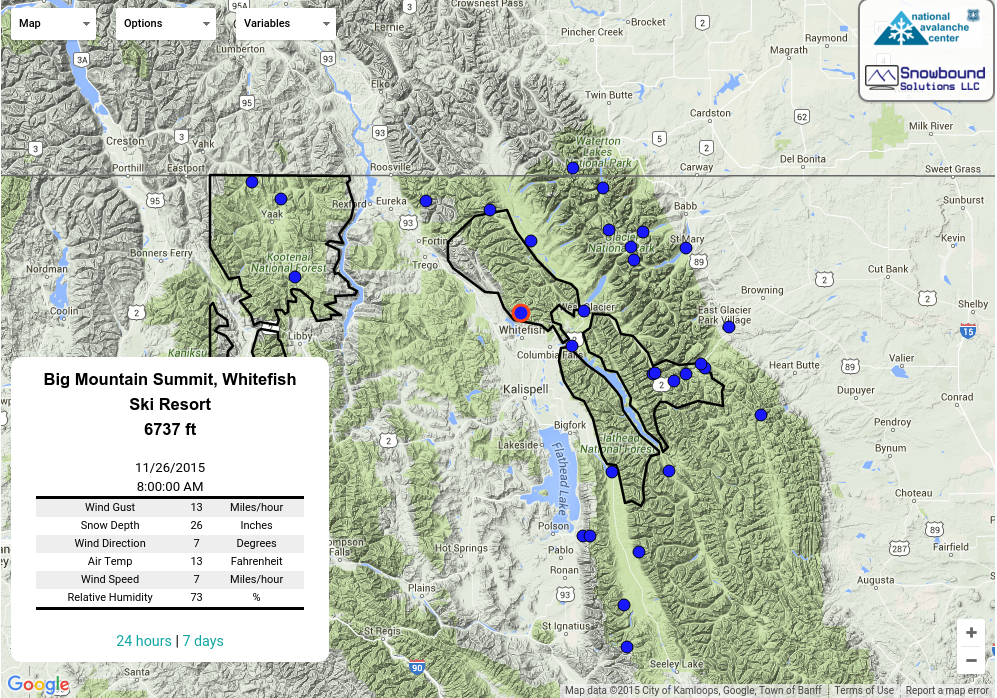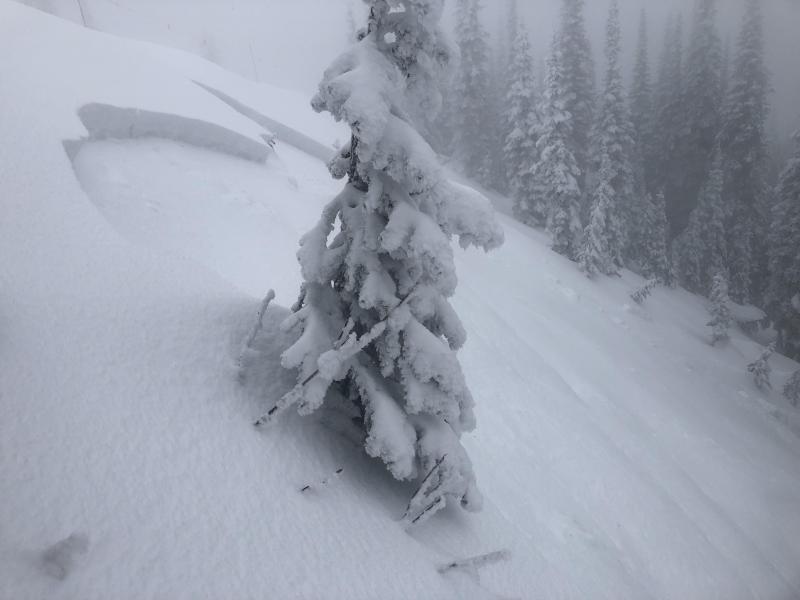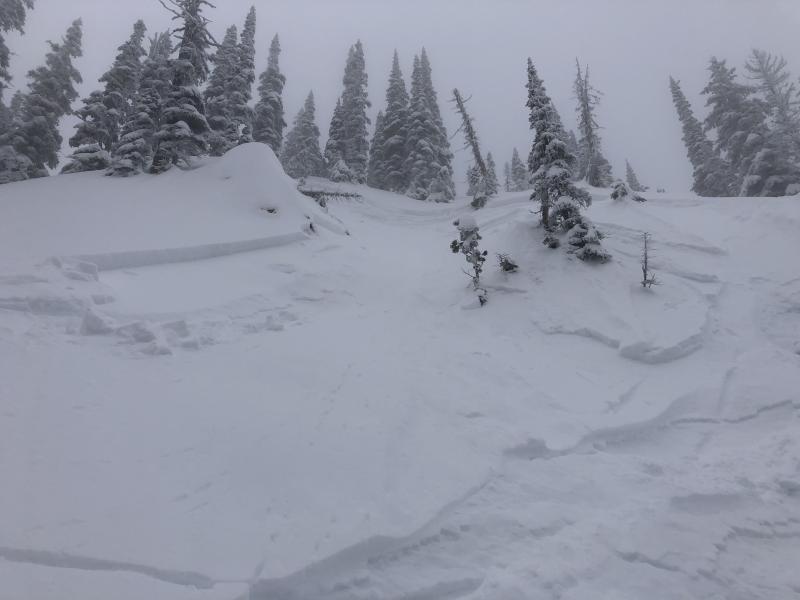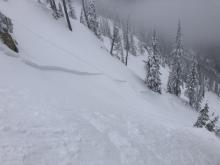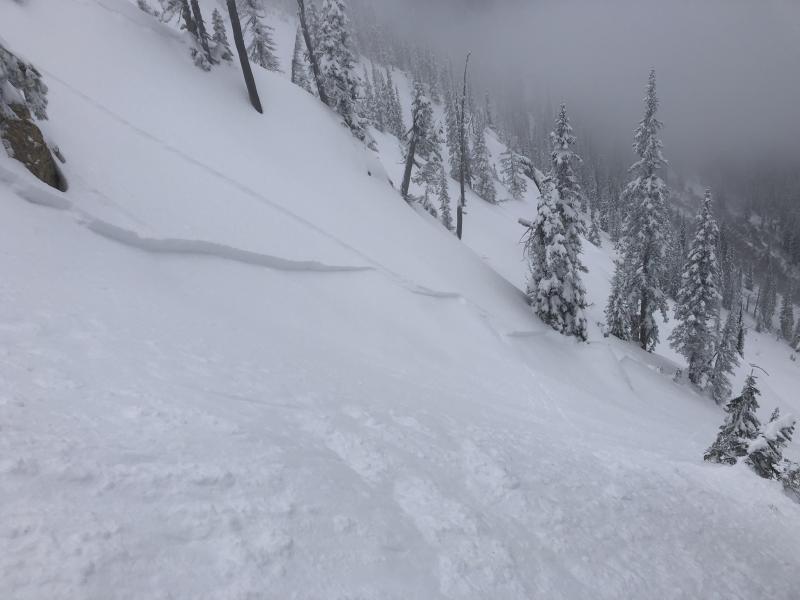| Wednesday | Wednesday Night | Thursday | |
|---|---|---|---|
| Cloud Cover: | Mostly Cloudy | Mostly Cloudy | Mostly Cloudy |
| Temperatures: | 23 to 29 deg. F. | 15 to 18 deg. F. | 21 to 27 deg. F. |
| Wind Direction: | Southwest | West | West |
| Wind Speed: | 15 to 20G40 | 10 to 15G28 | 15G30 |
| Snowfall: | 1" to 6" in. | 1 to 4" in. | 0 to 3" in. |
| Snow Line: | 2500' | 1500' | 1500' |
Whitefish Range
Swan Range
Flathead Range and Glacier National Park
How to read the forecast
Another round of new snow and wind beginning Wednesday will bring changing avalanche conditions. Dial back your terrain selection if you begin to see 8 or more inches of new snow accumulate in the area you are traveling. Steer away from slopes where you see wind blowing snow into thicker, more dangerous slabs. Terrain that is sheltered from the wind with slope angles less than about 35 degrees will be your best bet for a safe and fun Thanksgiving week.

No Rating
?
Above 6500 ft.
No Rating
?
5000-6500 ft.
No Rating
?
3500-5000 ft.
-
Type ?
-
Aspect/Elevation ?

-
Likelihood ?CertainVery LikelyLikelyPossible
 Unlikely
Unlikely -
Size ?HistoricVery LargeLargeSmall
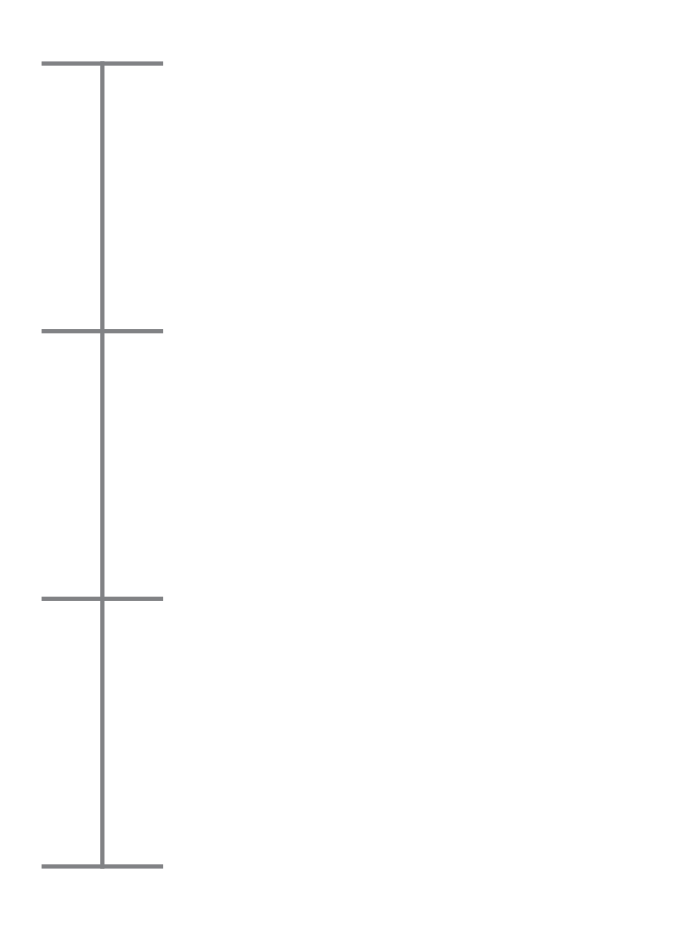
Accumulating new snow and moderate to strong winds will form slabs 4 to 12 inches thick at mid and upper elevations. These slabs will likely be more widespread in the Swan Range, where more snow is expected to fall. Moderate to strong winds will build a more dangerous slab on the leeward side of ridges, saddles and cross-loaded terrain features. Shooting cracks, blowing snow, and whumpfing collapses are all signs to dial back your terrain selection. Remember, this time of year even a small avalanche can cause significant trauma by dragging you over rocks, stumps, and trees.
Since Friday’s update, a bout of wind and new snow blanketed the forecast area at mid and upper elevations. Five to ten inches of new snow fell as winds soared up to 50 mph. This combination created small to large wind slabs and grew cornices along ridgelines. On Friday, a climber was able to trigger a small wind slab with the ol’ faithful snowpack test, the ice tool slap (observation 1). Other riders unintentionally triggered a large cornice and saw remnants of a natural slab avalanche on Heavens Peak in Glacier National Park (observation 2). Although these wind slabs are settling out and becoming less of a problem, I want to highlight them because the next generation of slab avalanches are on the horizon.
Over the past few days, mostly clear skies and cool nights left an array of weak surface conditions. On steep, southerly aspects I would expect to find a recent crust from Sunday’s sunny weather. I would also expect to find near-surface facets that formed from cold nights that drove large temperature gradients in the upper part of the snowpack. This weak layer was observed in Glacier National Park on Tuesday (observation 3). Additionally, surface hoar was also observed in areas of Glacier National Park. This weak layer likely got destroyed by wind and sun except in sheltered terrain.
So why are current surface conditions important?
New snow will begin to fall Wednesday with lingering showers through the remainder of the workweek. We will likely see 3 to 6 inches of new snow in much of the Whitefish Range, Flathead Range, as well as Glacier National Park. The Swan Range is favored and will likely see 6 to 10 inches of new snow. This new snow will fall on one of the potential failure planes mentioned above.
If your travels take you into the Swan Range, expect to find a more widespread avalanche hazard due to higher snow accumulations. In the Whitefish and Flathead Ranges, the primary concern will be steering away from leeward aspects where the wind blows new snow into deeper, more dangerous slabs. Shooting cracks, blowing snow, and whumpfing collapses are all signs to seek out wind-sheltered terrain with lower slope angles. Being caught and carried this time of year has traumatic outcomes. If in doubt, choose simpler terrain.
FAC staff will continue to monitor conditions and post updates as conditions warrant. We anticipate daily forecasts and full operations to begin in December. Your observations would be very helpful in the meantime. Stay in touch using our handy Snowpack Tracker.
Check out this winter's avalanche safety course schedule and sign up for a class that fits your needs.
Moist, unstable air will persist through Thursday, bringing widespread snow to the area. Expect 3 to 6 inches of new snow in most our forecast area, with the Swan likely seeing up to 10 inches of new snow by Thanksgiving. Winds start off moderate gusting to 50 mph out of the southwest on Wednesday tapering off as the week progresses.
This forecast applies only to backcountry areas outside established ski area boundaries. The forecast describes general avalanche conditions and local variations always occur. This forecast expires at midnight on the posted day unless otherwise noted. The information in this forecast is provided by the USDA Forest Service who is solely responsible for its content.

